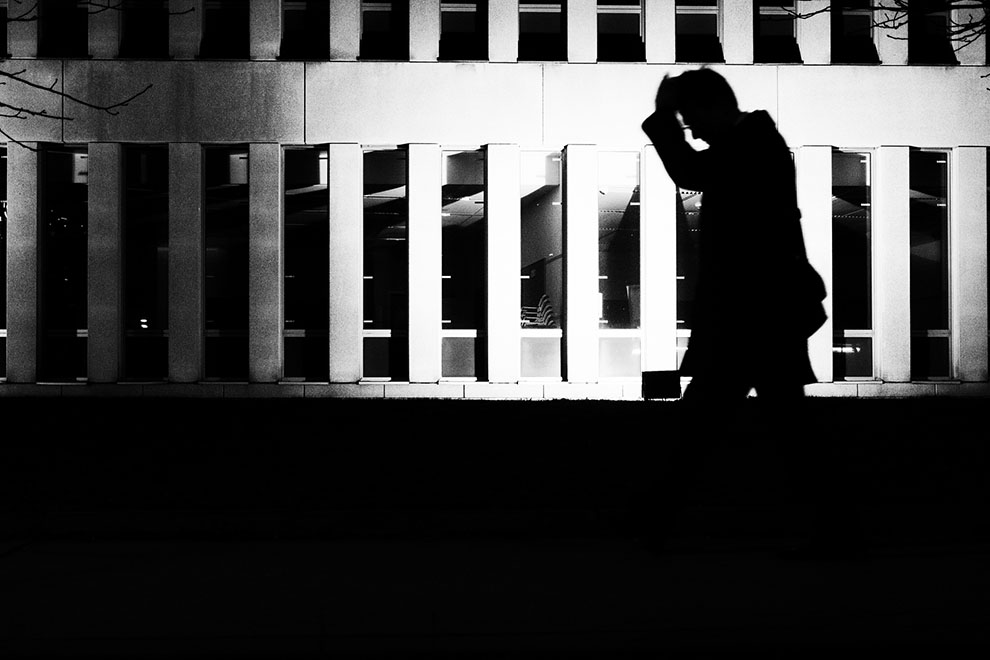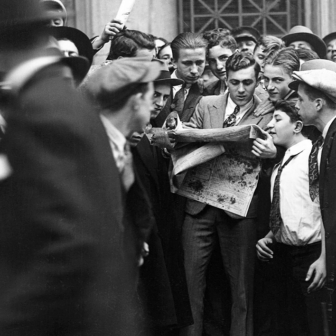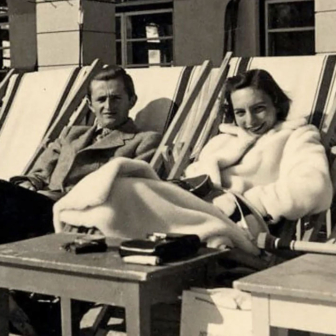In 1937, at the age of fourteen months, Geoff Meyer appeared before a magistrate, who made him a ward of the state and handed him over to a state-run orphanage. By the time he was four, Meyer lived in a “boys’ depot,” which housed thirty to fifty children until they were fostered, though many were fostered, returned, and fostered again. For all the years he lived there, Meyer never learned any of the other boys’ names. “We weren’t allowed to talk to each other,” he said, “and the staff always said, ‘Hey you’ or used terrible words.”
Every day at the depot began with a reckoning for children who wet their beds. Staff draped the urine-soaked sheets around bed wetters’ heads and made them parade around the dormitory. The food was often rotten, and when Meyer threw up after eating weevil-ridden porridge, he was forced to eat his own vomit. Punishments included floggings and scrubbing the floor with a toothbrush, but the most feared was the small cupboard under the stairs. Boys were locked in with no food or water, and they soiled themselves until they were released. They never spoke, Meyer said. “We held hands.”
When prospective foster parents visited, the boys were lined up along the front veranda to be inspected. Meyer was fostered out eight times, and in his final placement he was sent to an old woman at Wentworthville, New South Wales. Meyer didn’t know who his parents were, why he was a ward, or if he had any family members at all, and – like every other adult in his life – his new foster parent wouldn’t tell him anything.
On 10 May 1954, his eighteenth birthday, Meyer simply fled, never to return. He had twenty-four pounds and eighteen shillings, the clothes he was wearing, a tennis racket, a cricket bat, and no friends, acquaintances or family that he knew of. He had no idea how to find a job or a place to stay.
In Australia, at least half a million children were placed in institutional care in the last century. For a long time these children were ignored, but over the last twenty years many stories about their mistreatment in homes and its long, damaging aftermath have emerged.
When the children reached a certain age and were ejected from their “homes,” they entered their own country like refugees, knowing nothing about “councils or libraries or voting.” Many died from drug- and alcohol-related causes, and some built careers in institutions, like the navy, or in the religious orders that ran their homes. Some became successful, but many struggled. Figures suggest that one-in-three attempted suicide, many experienced homelessness, and as a group they had a high incidence of mental illness and physical injuries.
As well as being places of mental and physical torture, the institutions systematically controlled children’s access to information while they were institutionalised as well as once they left. In many homes the staff had authority over every connection children had with the outside world, not sharing news and even confiscating letters from family. Some children were even schooled at the institution and did not leave the grounds for years. Many were not taught to read or write or do basic mathematics. Their names were arbitrarily changed, and it was common for them to be addressed only by a number. Some children were told that their parents were dead when they weren’t or that they never wanted to see them again when they did.
Even though it has been decades since group homes closed, vital information about their residents is still being withheld. For the children it’s as if someone pushed them through the looking glass, and decades later they still can’t find their way back.
##
What gets passed down? Records, of course, are by definition one key source of personal data. It may be a banal observation, but sometimes you don’t notice what gets passed down until it doesn’t. Birth certificates, school records, the names of family members, and all the other bits of information that we take for granted only become disturbingly obvious in their absence. The ordinary records that chart the passage of a life matter a great deal – not just to governments and corporations and librarians but to ordinary people too.
It’s almost impossible for most of us to imagine not knowing such facts about ourselves, and yet this information was effectively erased from the lives of the children of twentieth-century orphanages.
One “ex‑orphan” told me that these former group-home children want, like any other citizen, to have information about themselves and their family – or its proxy – and all the power that such knowledge brings. Yet there are enormous obstacles to obtaining it. In Australia, records are scattered throughout each state, held by government records offices and by the religious institutions that housed children. Government departments may take years to respond to a single request. Many records were destroyed, but there’s little clarity about what was lost and what was never kept in the first place. Many files are undated, sloppy or incorrect, and there is no consistency in how files are searched for or delivered. There’s no central organising body, and most people need professional-grade archivist skills to find and understand the documents.
Generally the ex‑orphans distrust bureaucracy, and while it is intimidating enough for them to enter a neutral institution like a public records office, many must return to the actual organisation that mistreated them. The overzealous application of privacy laws also means that when many care leavers do manage to receive files, their missing siblings’ names are redacted. One ex‑ward received a photo of a children’s party with all the little faces at the table whited out except for his own.
Naturally, when information can be retrieved, even the most banal detail of a stolen life can be traumatic. “People get rotten drunk in order to read their files,” one activist told me. In a government report one woman described opening her files at home alone and being committed to a psychiatric ward a week later. Others put the files away and never look at them.
##
I met Geoff Meyer in 2012. With his Fair Isle sweater and slicked-down hair, he looked like anyone’s seventy-six-year-old grandfather. He was courtly and jokey, and he called me “mate.” He said that not long after he had run away to Sydney, “I started to get it into my brain to find out if I had any family.” He guessed that the best place to look was the Department of Child Welfare. “I’m a state ward,” he told a young man at the local office. “I’m looking to see if I’ve got a mother and father.” The young man went into another room and after five minutes returned and said, “I think you might have a sister.” He disappeared again to check further, and then an older man came out and said to Meyer, “I think you had better leave.” Meyer thought he had misunderstood. “I think you had better leave,” the man repeated. “No,” said Meyer. They argued back and forth, the man continuing to try to dismiss Meyer with no explanation and Meyer refusing to budge. Then the man told him, “Get out, or I’ll call the fucking police.” Meyer was frightened of being sent back to his foster mother, so he left.
He got a job, married and had four children and, as the years passed, eleven grandchildren. Meyer never told any of them that he had been a state ward. But when he retired, he started to go to the state records offices to see what he could find. Even then he didn’t tell his wife about his past. “It felt very, very private,” he explained. He eventually tracked down his birth certificate and discovered that his mother was Maisie Aileen Meyer, a Sydney local, and his father was Leo Joseph Meyer, an American sailor. There was no information about why he had been made a state ward and no record of contact from his parents.
As he continued his search for records about his life and family, Meyer was told different things by different departments. Some officials were kind to him; others were perfunctory. One said his information had been lost in a flood; another claimed it had been destroyed in a fire. At the records offices Meyer had to insist that he was legally entitled to a copy of his files. When he did receive them, they had taken months to reach him and were often missing documents from the original sets he had seen.
When he was sixty-eight, Meyer saw a newspaper notice seeking former state wards. He responded and shortly after found himself at the head office of the Care Leavers Australia Network in Sydney, speaking with one of its founders, Leonie Sheedy. “All that time, I thought it was only happening to me, but it was happening all over the place.” When he got home that day and told his wife about his experience, she asked, “What really went on in your life?” So he began to tell her too.
Over a cup of tea Meyer showed me the files he had recovered. The first item was his intermediate school certificate. He found other records about his education and his foster parents, but he could locate only one from before he was ten. He spends a lot of time now searching for the missing records of his first decade; they are proof of an otherwise invisible life, but he also wants them so he can sue the government for compensation.
The likelihood of Meyer’s finding his files is remote. All over the world the funds devoted to preserving records and archives are being cut. Of course, the fewer funds that are available, the more endangered are the records that do remain.
In 2012 an Australian state ombudsman revealed that the government had committed hundreds of breaches of records-management legislation. He discovered that a single department was in possession of eighty linear kilometres of children’s home files, most of them uncatalogued. Some were stored in basements with dripping water and rat infestations; others were illegally marked for destruction.
While freedom‑of‑information acts in most Western English-speaking countries may grant people like Geoff Meyer access to their records, information that has not been indexed can never truly be free. The care leavers suspect the governments are suppressing files to avoid being sued. Perhaps, but bureaucratic apathy achieves the same ends.
The last time I saw Meyer, he told me that he had discovered a distant cousin on his father’s side in the United States through Ancestry.com. His new cousin told him that his father had returned to the United States and died young. Later Meyer’s mother and another man also set sail for America. Their ship berthed in California, but there the trail went cold.
Meyer wondered for a long time whether he actually had a sister but never found a trace of her. What he wanted to know most of all was whether he’d been surrendered or taken. If he’d been surrendered, he reasoned, maybe the person who’d turned him in was a relative. Maybe it was a sister of his mother, maybe she had children too, and maybe he had more family. Still, he said, “I’m seventy-six. How long do I have to find out?” •
This is an edited extract from The Invisible History of the Human Race: How DNA and History Shape Our Identities and Our Futures by (Black Inc.), $29.99.




